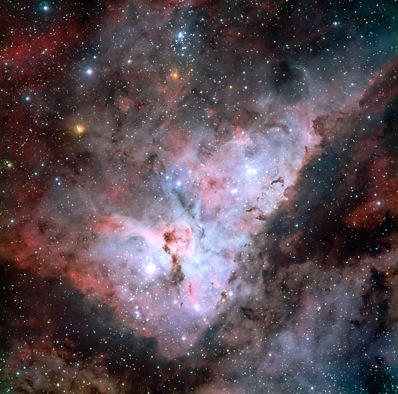|

Top Stories

|

|
 |
 |


Wall of gas divides
cosmic metropolis
...A new study from the Chandra X-ray Observatory unveils the star-forming factory NGC 604 as a divided neighbourhood...
read more

Supermassive black holes not guilty of shutting down star formation
...Galaxies cease star formation long before their supermassive black holes have the power to do the job themselves...
read more

C1XS takes first taste of lunar X-rays
...The UK-built C1XS instrument flying aboard the Chandrayaan-1 orbiter has successfully detected its first X-ray signature from the Moon...
read more
|
 |
 |

|
Spaceflight Now +

|

|
 |
 |

Subscribe to Spaceflight Now Plus for access to our extensive video collections!
 How do I sign up? How do I sign up?
 Video archive Video archive

STS-120 day 2 highlights

Flight Day 2 of Discovery's mission focused on heat shield inspections. This movie shows the day's highlights.

 Play Play

STS-120 day 1 highlights

The highlights from shuttle Discovery's launch day are packaged into this movie.

 Play Play

STS-118: Highlights

The STS-118 crew, including Barbara Morgan, narrates its mission highlights film and answers questions in this post-flight presentation.

 Full presentation Full presentation
 Mission film Mission film

STS-120: Rollout to pad

Space shuttle Discovery rolls out of the Vehicle Assembly Building and travels to launch pad 39A for its STS-120 mission.

 Play Play

Dawn leaves Earth

NASA's Dawn space probe launches aboard a Delta 2-Heavy rocket from Cape Canaveral to explore two worlds in the asteroid belt.

 Full coverage Full coverage

Dawn: Launch preview

These briefings preview the launch and science objectives of NASA's Dawn asteroid orbiter.

 Launch | Science Launch | Science

 Become a subscriber Become a subscriber
 More video More video

|
 |
 |

|
|
 |

Best image ever of
Carina Nebula
BY KULVINDER SINGH CHADHA
ASTRONOMY NOW
Posted: 16 February, 2009
Using the modest 2.2-metre telescope at La Silla in Chile (on loan from the Max Planck Institute), European Southern Observatory (ESO) astronomers have taken the best image to date of the Carina Nebula (NGC 3372), which lies 7,500 light years away.

The Carina Nebula, with its hot, pink hydrogen gas, and thick, cool dust lanes. Image: European Southern Observatory.
This new image was taken in broad ultraviolet and visible filters, as well as hydrogen-alpha and silicon II narrow-band filters. It spans 0.55 x 0.55 degrees, a shade larger than the full moon on the sky. This corresponds to an area of 5,184 square light years of nebula. ESO scientist Dr Henri Boffin says, “The data was initially taken in the framework of the ESO imaging pre-FLAMES survey (Fiber Large Array Multi Element Spectrograph). The primary goal of this survey is to provide the ESO community with data sets from which suitable target lists can be extracted for follow-up observations with this new facility at the VLT (Very Large Telescope Array).” Boffin says that additional data was collected in the visible and near-infrared for another nebula in order to answer some questions on the nature of molecular clouds and how they relate to protostellar collapse and star formation.
Carina is also an intense region of star formation, four times larger than the Orion Nebula (which itself is part of the Orion Molecular Cloud Complex — a vast star formation region). Carina’s pink glow comes from hydrogen that’s been energized by radiation from young, giant stars, and the dark regions are cold lanes of dust.
The Carina Nebula is home to the largest and most luminous star known: Eta Carinae. At 100 solar masses, Eta Carina is so large that it survived a perceived supernova explosion that was observed in 1842 (making it the second brightest star in the night sky). It tends to be prone to violent outbursts. Like the other powerful stars, Eta Carina has strong stellar wind outflows that shape and sculpt the nebula. It is also thought to have a companion star that orbits in a 5.54-year orbit (and was at its closest to Eta Carinae in mid-January), and when their winds collide, some unusual things happen. As Boffin says, “The ionising radiation from the secondary star is obscured more and more, as it plunges into the deeper and deeper zones of the primary star’s wind.”
|
 |
 |
 |
|
|



